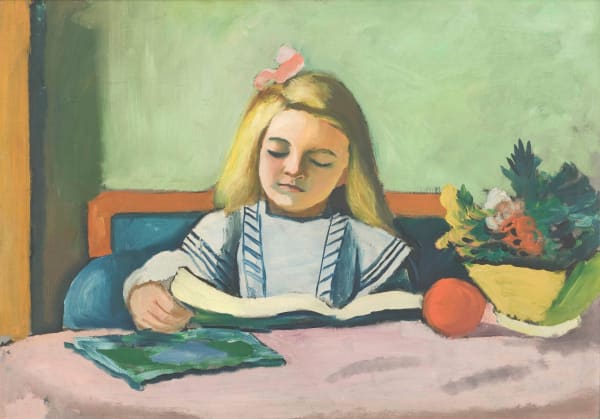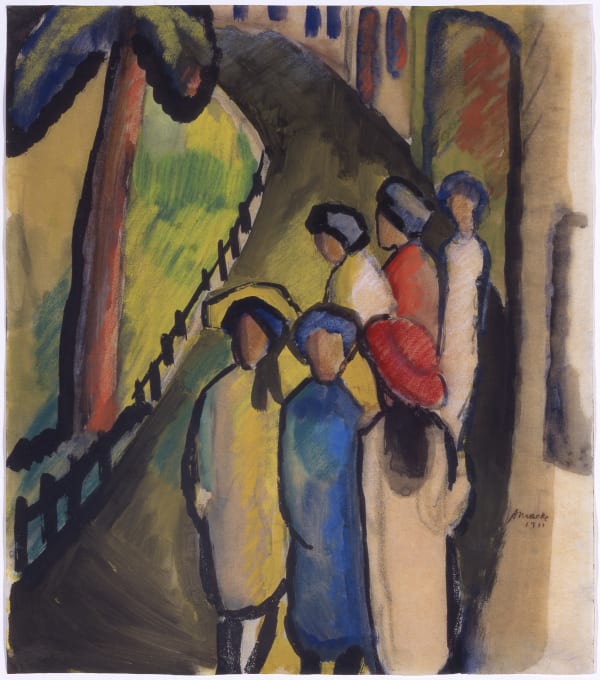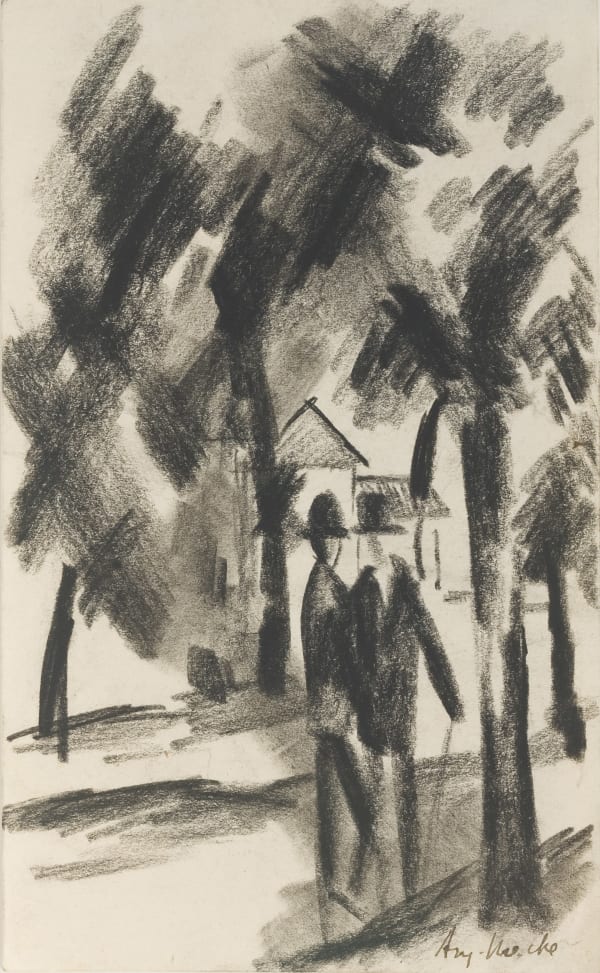AUGUST MACKE German, 1887-1914
"The formless, the infinite, the zero remains inconceivable. God remains inconceivable. Man expresses his life in forms. Every art form is an expression of his inner life. The exterior of the art form is its interior."
August Macke was a German Expressionist painter who utilized a combination of simplified forms and patchwork colors to produce vibrant landscapes, portraits, and figurative scenes. “What I most cherish is the observation of the movement of colors,” he once said. “Only in this have I found the laws of those simultaneous and complementary color contrasts that nourish the actual rhythm of my vision.” Born on January 3, 1887 in Meschede, Germany, he went on to study at the Kunstakademie Düsseldorf, and later with Lovis Corinth in Berlin. Macke’s transition from muted realism to the brightly colored Cubist forms seen in his work Woman in a Green Jacket (1913), is likely attributable to his meeting Robert Delaunay in France. He was notably a founding member of the Der Blaue Reiter group while he was living in Munich. Other members of the group included Wassily Kandinsky, Alexej von Jawlensky, Franz Marc, Paul Klee, and Gabriele Münter. Macke died in combat while serving in World War I, on September 26, 1914 in Champagne, France. Today, his works are in the collections of the Albertina in Vienna, The Museum of Modern Art in New York, the Museum Kunst Palast in Düsseldorf, the Los Angeles County Museum of Art, and the August-Macke-Haus in Bonn, Germany, among others.
-
 AUGUST MACKELesendes Mädchen auf blauem SofaOil on canvas50 x 71 cm
AUGUST MACKELesendes Mädchen auf blauem SofaOil on canvas50 x 71 cm
19 3/4 x 28 in -
 AUGUST MACKEMädchen am Abend , 1911Watercolor on paper31 x 26,9 cm
AUGUST MACKEMädchen am Abend , 1911Watercolor on paper31 x 26,9 cm
12 1/4 x 10 1/4 in -
 AUGUST MACKESpaziergänger unter Bäumen, Hilterfingen, 1913Charcoal on paper17,5 x 10,8 cm
AUGUST MACKESpaziergänger unter Bäumen, Hilterfingen, 1913Charcoal on paper17,5 x 10,8 cm
6 3/4 x 4 in -
 AUGUST MACKEStudie "Gelbes Segel", 1913Chalk wiped, on sketchbook sheet, mounted on cardboard10,6 x 17,5 cm
AUGUST MACKEStudie "Gelbes Segel", 1913Chalk wiped, on sketchbook sheet, mounted on cardboard10,6 x 17,5 cm
4 x 6 3/4 in




